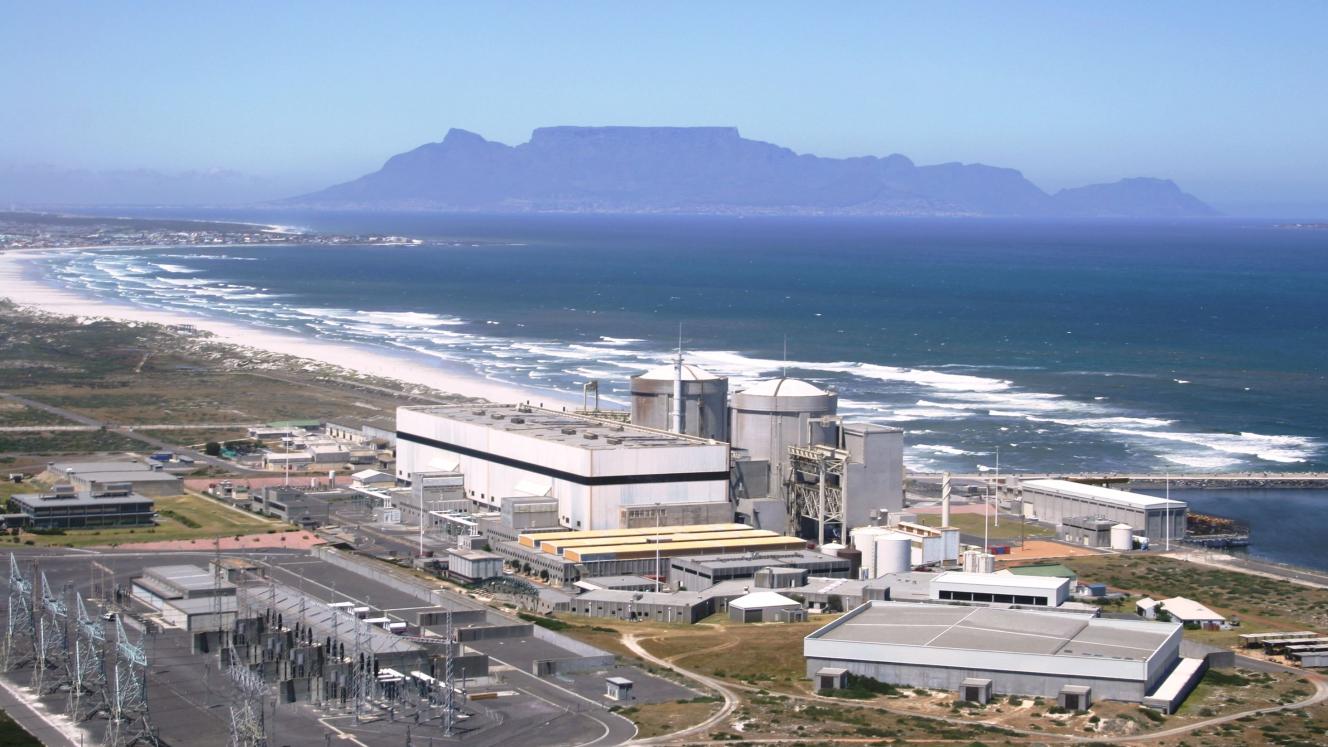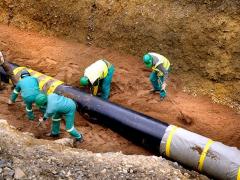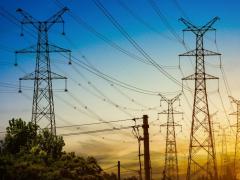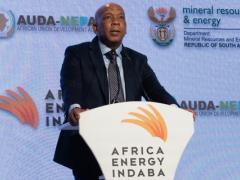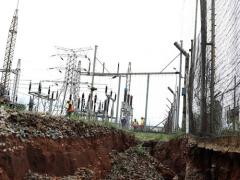Information from Koeberg Alert Alliance
Issues are mounting at the Koeberg nuclear plant as the life extension project gets further and further behind schedule.
The exodus of skilled staff continues, the number of disputes between Eskom and the various contractors continues to mount alarmingly and the expiry date of the operating licence draws closer. Against this backdrop, analysts and activists have questioned whether the R21-billion Eskom has provided for the project is sufficient and are expressing concerns that massive unreported cost overruns pose a substantial financial risk to Eskom and the treasury.
A collaborative effort was made to compose a detailed report titled Submission to Treasury on the costs of Koeberg Refurbishment which was sent to Treasury in July 2023 by Lydia Petersen, a member of the Koeberg Alert Alliance and the Southern African Faith Communities Environment Institute (SAFCEI). To date there has been no direct response or acknowledgment of receipt of the report from Treasury.
Background
Koeberg first produced power in 1984 and its 40-year operational licence comes to an end in July 2024. In 2010, the Eskom Board approved a project to refurbish the plant at a cost of R20-billion in order to extend the plant’s lifespan by an additional 20 years. Actual refurbishment began in January 2022 when an attempt was made to replace the steam generators and do other work on Unit 2.
This was subsequently aborted due to a lack of preparation by Eskom. In May 2023, Eskom announced that Unit 1 would undergo a long-duration outage starting on 24 July 2024 and has asked the National Nuclear Regulator (NNR) for the operating licence for the plant be changed to include a later end of life date for Unit 2. If successful, this would mean Unit 1 reaches its end of life in 2024 and Unit 2 in 2025.
One major component of Koeberg’s life extension or Long-Term Operation (LTO) project is the replacement of the six steam generators which began with French contractor Framatome in 2014. There is often confusion in the media between the steam generator replacement (SGR) project and the total life extension project, which includes the replacement of many other pieces of equipment as well as structural repairs. At great cost and with many blunders along the way, some of the new steam generators finally arrived in South Africa two years late in 2020.
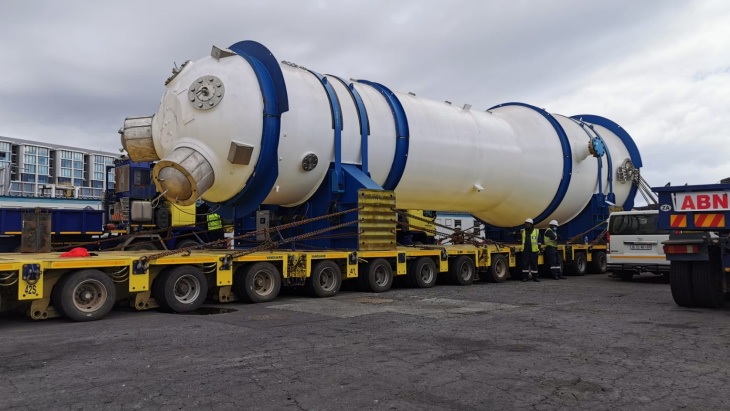
Problems with the life extension project have been ongoing. In 2016, Eskom suspended Koeberg’s general manager, Riedewaan Bakardien because he wrote a letter (that was leaked) stating that Koeberg will not be ready for a life extension refurbishment. Bakardien was reinstated, but subsequently resigned and emigrated to Canada in 2022.
Budget underestimation
Although 13 years have passed since Eskom’s 2010 budget for Koeberg’s refurbishment, Eskom has not provided the public with any updated cost estimate for the project, and officially the cost remains close to what it was in 2010.
In a 2022 presentation to parliament, Eskom admitted: “The original cost estimate of R20-billion was done in the 2010 parameter [sic]. If reassessed in today’s values, it would be significantly different.” However, later in December 2022 in response to a parliamentary question, Eskom declared that “the total cost associated with the activities needed to support the licence application for long-term operation is projected to amount to an estimated R21-billion”. It is not known if the Board has approved any updated cost figures since 2010.
The Report states: “To understand the long-term implications of the Koeberg life extension project, an accurate idea of the costs of the refurbishment must be determined. In 2010 the project was projected to cost R20-billion, however, R20-billion in 2010 cannot be R20-billion in 2023.”
“A simple inflation adjustment calculation shows that between 2010 and 2022, SA’s inflation rose by about 88%, according to World Bank data. This would imply that R20-billion in 2010 is at least R38-billion in 2023, assuming that nuclear power plant-related costs rose in line with general consumer price inflation. However, given the significant foreign exchange rate related component of the LTO project work, these costs are likely to have risen faster than the general inflation rate as the rand was R7,50 to the US Dollar in 2010.” This is opposed to R18,80 to the dollar today.
In the same 2022 presentation, Eskom indicated that there has been an extra cost of R1,5-billion due to interest. In addition, there have been many financial claims from Framatome for delays in the life extension project caused by Eskom, including a single claim for R1,1-billion, although this was later adjudicated to be R950-million.
Time overruns
Initially, Eskom announced that the refurbishment work would take five months for each of the two units. Work on Unit 1 began on 10 December 2022 and was originally scheduled to be completed in 180 days with the unit returning to service in June 2023. It was then reported in May that the planned completion date would be in August. In August, Eskom announced that Unit 1 is scheduled to return to service only in September. This was later changed to November – a full five months later than the initial estimate.
Furthermore, Eskom has stated that an additional 200-day outage is planned for Unit 1 starting in July 2024. If Eskom manages to stick to the planned schedule, unlikely as that may be, given the power utility’s history, it will mean that more than 17 months of work is needed to refurbish one unit. Similarly, Unit 2, which was taken offline on 18 January 2022 for about eight months, still requires the three steam generators to be replaced which will require another long-term outage.
The Report states: “It is inconceivable that work which was thought to require five months per unit will remain at about the same cost as work which turns out to take 15 months per unit. A 400-day job cannot cost the same as a 180-day job.” Since the report was written before the recent updates from Eskom, the 15-month figure quoted is already too low and it appears that 18 months per unit is now more realistic.
Missing costs
Moreover, there are various expenses that have been omitted which can be classified into two categories: hidden costs and risk-related costs.
Some of the hidden costs include a seismic hazard assessment (as required by the NNR due to the proximity of seismic fault lines) which will cost more than R200-million, Eskom’s Koeberg-Ankerlig 132 kV transmission line project (also a safety requirement), other parts requiring replacement, an additional 20 years of high-level waste which will have to be dealt with, and bailouts provided to the Nuclear Energy Corporation of South Africa (NECSA) which was created to promote nuclear technology and enable the initial construction of Koeberg.
There are also costs that would only continue to be incurred if Koeberg’s life is extended or new nuclear plants are built, such as the nuclear division within the Department of Mineral Resources and Energy with its own Deputy Director-General and staff, Eskom’s Chief Nuclear Officer, and a post at Megawatt park.
As for risk-related costs, it is well known that mega projects – and nuclear power plant projects in particular – are prone to both time and budget overruns. Eskom’s most recent experience of the cost and time overruns at Kusile and Medupi ended up costing more than double the initially projected figures. The Report states: “Given the particular complexity and nature of the refurbishment work being attempted at Koeberg, this means the costs could ultimately be somewhere between R80-billion and R140-billion.”
Load shedding’s impact on economy
The Report highlights how extended outages of the units at Koeberg are resulting in an extra stage of load shedding at the height of the energy crisis. Using a cost of load shedding of R87/kWh (as per the CSIR), one month's outage of a single unit at Koeberg, while the country is experiencing load shedding, costs the economy approximately R52-billion. If each unit is down for 15 months, which is now emerging as an optimistic figure, the decision to attempt the life extension has cost an eye-watering R1,5-trillion in terms of cost to the economy. This is of course unless there is further slippage of dates, which given past performance is highly likely.
The Report states: “If we add up the load shedding cost to the economy of the Koeberg unit outages so far and include the anticipated upcoming outages according to Eskom, the total cost to the economy of the refurbishment will be at least R933-billion. And these figures are likely to increase due to delays.” The lower figure in the Report is due to the fact it was written before the latest delay was announced by Eskom.
The Report asks: “Is the damage done by an extra stage of load shedding, due to the refurbishment outages, worth the benefit of having the plant’s life extended?”
The contribution of Koeberg to generation capacity and renewable costs
When both units of Koeberg are operating they produce about 1,85 GW, which in 2022 constituted 3,5% of national nominal capacity according to the CSIR. Currently, South Africa is at times short of up to 8 GW capacity. The presidency projects that collectively new projects and demand management are projected to add over 20 GW by 2025 and, from Ministerial determinations alone, 28 GW is planned to be online by 2030. This means the potential contribution of Koeberg is set to become less and less significant as the years go by.
A more recent presentation by Eskom in June 2023 on the Renewable Energy Grid Survey shows a contracted capacity of over 47 GW coming online over the period 2023 to 2026. This is further evidence that the (less than) 2 GW from Koeberg will be of little significance post 2025.
Furthermore, the cost of alternatives, in particular renewable energy, has fallen steadily since 2010, significantly affecting the validity of any cost-benefit analysis supporting the original 2010 decision to apply for an extension of Koeberg’s working life.
On 19 August 2023, President Ramaphosa boldly announced that load shedding would be over ‘in 2024’. While this might be overly optimistic, it does show that government agrees that Koeberg is needed more now than it will be from 2025 on.
Risky business
At a recent event in Stellenbosch, former NNR CEO Prof. Bismark Tyobeka, stated that the Chairman of NECSA, David Nicholls, went to the United Arab Emirates to warn them that continuing to poach skilled nuclear people from South Africa is increasing the risk of a nuclear accident at Koeberg, and they would share the responsibility for that.
Media has reported widely about Koeberg staff “working day and night” and “around the clock” to bring Unit 1 back online as soon as possible. The staff exodus over the past few years, including many lower-level skilled staff as well as senior people such as Mahesh Valaitham, Riedewaan Bakardien, André de Ruyter and more recently Jan Oberholzer, combined with the recent demand schedule on the remaining staff, makes immediate commencement of Unit 2’s outage just a few days after they completed the work on Unit 1 very risky in term of human resources. The risk of human error becomes more likely in such a scenario.
Conclusion
The Report concludes: “The benefit of having Koeberg online from 2025 to 2045 needs to be balanced against the cost of the long-term outages necessary to do the life extension refurbishment. The additional 1,85 GW that can be generated by Koeberg now, is far more valuable than the generation of the same MW in 2025. This is particularly the case should the project suffer from delays. With the current state of the coal fleet, any contribution from Koeberg would be a significantly higher percentage of national demand, if both units were allowed to operate.
“It is therefore highly questionable whether it is wise to continue with a project which has an unknown final cost and may not receive regulatory approval, as well as being set to contribute a relatively insignificant percentage of national supply capacity over the years of the life extension.
“While it is difficult to arrive at accurate figures given the lack of information from Eskom, it seems likely that there are alternatives that are cheaper than the Koeberg life extension project. Moreover, diverting whatever funds still to be spent on Koeberg into strategically strengthening the grid would have a greater long-term benefit.
Furthermore, the damage to the economy from the long-term outage (with more than half of them still ahead as at the time of writing) while external to Eskom’s financials, is entirely unacceptable. Abandoning the refurbishment would not only reduce the extra load shedding resulting from the long outages still required, but it would also make grid capacity available to new renewable energy projects and make the Koeberg site available for forward-looking projects such as a utility-scale battery installation. A thorough cost/benefit analysis is urgently required using actual up-to-date figures to inform such a decision.”
Send your comments to rogerl@nowmedia.co.za
